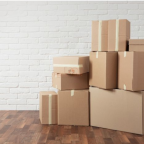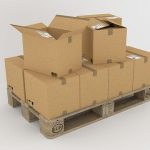Though the weight a box can hold might not be on top of mind for anyone making a single purchase, the weight and strength of a corrugated box can strongly affect the bottom line. Getting the appropriate weight and strength for a corrugated box means lower costs in the supply chain and added profit for a business.
Corrugated boxes are made of 3 different layers of paper, an inside liner, outside liner and fluting that runs in between. The flutes between the layers of liners lend strength and structure to corrugated boxes and lend an extra layer of protection. This corrugated method, also known as containerboard, actually helps give the strength required to hold weight and protect the product inside.
In this blog Mr. Gaurav Jalan, Founder and Director of Packman Packaging Delhi’s top packaging manufacturer talks about the ways to calculate the weight a corrugated box can hold.
The strength of a corrugated box begins with its material. A box’s strength is linked to its density. The more walls a box, the stronger it will be. The manufacturer’s stamp inside the box normally states a single wall, double, or triple to let one know the strength of the box.
Since, all corrugated boxes are not made the same, the exterior and inner dimensions can vary, meaning that the weight the box is able to hold can also vary. Calculating the box size also lets businesses to make informed decisions regarding logistics and supply chain management, but box size will not impact the strength of the box overall.
Even though it could be tempting to only measure from the outside, box size is always provided in terms of inner dimensions. Normally, the length is mentioned first, or the longest dimension of the opening, followed by the breadth and depth.
Generally, corrugated boxes maintain a proportion of 2:1:2 (L:W:D). However, corrugated boxes of various dimensions are completely available for products that do not fit in standard sizes.
For boxes of every size, calculating the weight which can be held by the corrugation is done by the term called the edge-crush test (ECT). ECT is a measurement of the compressive strength of corrugated board. It is gauged using compressing a minor segment of the board on edge between 2 rigid plates perpendicular to the direction of the flutes until a peak load is reached
Compared to earlier industry standards, using ECT-rated corrugated boxes occur in fewer raw materials, fewer energy requirements, and decreased pollution, in every stage of the package’s life cycle.
To calculate the weight that a corrugated box can hold, the ECT rating is important. On the bottom of almost every shipping box, there will be a Box Manufacturer’s Certificate and there will be a number corresponding to the Edge Crush Test.
Here are estimates for the amount of weight a single-wall a corrugated box can hold depends on the ECT number found on the bottom of the box.
ECT Number Weight able to be sustained in pounds
32 30
40 40
44 50
55 65
A double-wall corrugated box can keep the below weight-based on the ECT number found on the bottom of the box.
ECT Number Weight able to be sustained in pounds
48 60
51 80
61 100
71 120
82 140
Based on the above calculations, businesses could make informed financial decisions as to how much product to keep in a box or how a large of a corrugated box is required to meet their needs.




